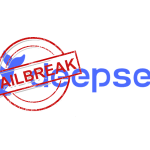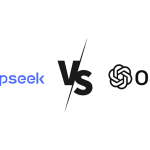Critical RCE Vulnerability in GFI KerioControl Fixed: Protect Your Firewall
A critical remote code execution vulnerability, CVE-2024-52875, has been discovered in GFI KerioControl firewalls. This significant security flaw provides a potential pathway for threat actors to exploit CRLF injection, enabling them to execute HTTP response splitting attacks. Such attacks often pave the way for further exploits like reflected cross-site scripting (XSS) or even the deployment of malicious firmware. The vulnerability has far-reaching implications, especially considering the scale of its exposure, with over 23,800 publicly accessible instances identified across various regions worldwide. The potential for misuse underscores the urgency for organizations to take immediate action to secure their systems against this vulnerability.
This article aims to provide an in-depth exploration of remote code execution vulnerability, including the technical mechanisms of the flaw, the scope of its impact, and actionable steps to safeguard your network. With critical infrastructure at risk, understanding the nature of this threat and implementing robust defenses is more essential than ever.
Understanding the Vulnerability
What Is Remote Code Execution Vulnerability?
Remote Code Execution Vulnerability is a security flaw in GFI KerioControl versions 9.2.5 through 9.4.5. The issue arises from improper input sanitization in specific HTTP headers, enabling attackers to inject malicious carriage return (\r) and line feed (\n) characters. Exploiting this flaw allows for HTTP response splitting, leading to:
- Cross-Site Scripting (XSS): Injected scripts can manipulate user interactions or steal sensitive data.
- Malware Deployment: Attackers can upload malicious firmware, gaining root access.
- Potential Network Compromise: With root access, attackers may gain the ability to exploit additional vulnerabilities or create backdoors for future intrusions.
Affected URI Paths
The vulnerability is present in the following URI paths:
/nonauth/addCertException.cs/nonauth/guestConfirm.cs/nonauth/expiration.cs
According to researcher Egidio Romano, user input passed to the dest GET parameter in these pages is not properly sanitized, allowing exploitation. This lack of sanitization opens the door for HTTP response splitting attacks that can lead to more significant vulnerabilities within the affected network.
Exploitation Details
How Attackers Exploit Remote Code Execution Vulnerability
Attackers craft a malicious URL targeting administrator users. Clicking the link triggers a proof-of-concept (PoC) hosted on an attacker-controlled server. The PoC then uploads a malicious .img file via the firewall’s firmware upgrade functionality, granting unauthorized root access to the system. Once this level of access is obtained, attackers can manipulate configurations, disable security features, or exfiltrate sensitive data.
Timeline of Exploitation
- November 2024: Egidio Romano discovers and reports the flaw.
- December 19, 2024: GFI releases a patch (v9.4.5 Patch 1).
- December 28, 2024: Exploitation attempts begin, originating from seven IP addresses in Singapore and Hong Kong. These attacks highlight the urgency of applying the available patches.
Impact Scope
Data from Censys shows over 23,800 exposed GFI KerioControl instances globally. Countries with significant exposure include:
- Iran
- Uzbekistan
- Italy
- Germany
- United States
- Czechia
- Belarus
The global distribution of these instances reflects the widespread reliance on GFI KerioControl firewalls, emphasizing the critical nature of securing them.
Mitigation Steps
Apply the Latest Patch
GFI released a fix for Remote Code Execution Vulnerability with version 9.4.5 Patch 1. Users should immediately:
- Update to the latest KerioControl version: Ensure all systems are running the patched version to mitigate the vulnerability.
- Verify patch installation: Double-check that the patch is applied correctly and that no outdated systems remain in use.
Enhance Security Posture
In addition to patching, consider these best practices:
- Restrict Access: Limit public exposure of firewall instances by configuring access control lists (ACLs) and firewall rules.
- Monitor Network Activity: Use tools like GreyNoise to detect unusual traffic patterns or suspicious IP addresses.
- Educate Administrators: Train IT staff and administrators to identify and avoid suspicious links and phishing attempts.
- Enable Intrusion Detection Systems (IDS): Add another layer of defense to spot and block exploit attempts in real time.
- Regular Audits: Conduct periodic security audits to identify potential weaknesses in the infrastructure.
Why This Matters
Global Impact
With thousands of vulnerable systems across critical sectors, Remote Code Execution Vulnerability poses a severe risk. Exploited firewalls can compromise entire networks, leading to:
- Data Breaches: Loss of sensitive or proprietary information.
- Downtime and Financial Losses: Operational disruptions can incur significant costs.
- Legal Liabilities: Organizations may face penalties for failing to secure sensitive data under compliance regulations.
Proactive Defense
Securing your KerioControl firewall isn’t just about compliance; it’s a fundamental step to safeguarding your organization against emerging threats. Proactive defense measures ensure long-term resilience against potential vulnerabilities.
Conclusion
Remote Code Execution Vulnerability is a wake-up call for organizations relying on GFI KerioControl. While the patch released on December 19, 2024, addresses the issue, the global exploitation attempts underline the urgency of immediate action. Update your systems, educate your teams, and strengthen your cybersecurity defenses to stay ahead of malicious actors.
Have you updated your KerioControl firewall? If not, download the patch today and protect your network. Stay informed by following our cybersecurity blog for the latest updates and insights. Don’t wait until it’s too late—act now to secure your systems and prevent potential breaches.
Summary
Remote Code Execution Vulnerability, a critical remote code execution vulnerability in GFI KerioControl, highlights the importance of prompt patching and proactive defense. With over 23,800 instances exposed globally, organizations must act quickly to mitigate risks. Apply the latest patch, monitor network activity, and follow best practices to ensure robust cybersecurity.






